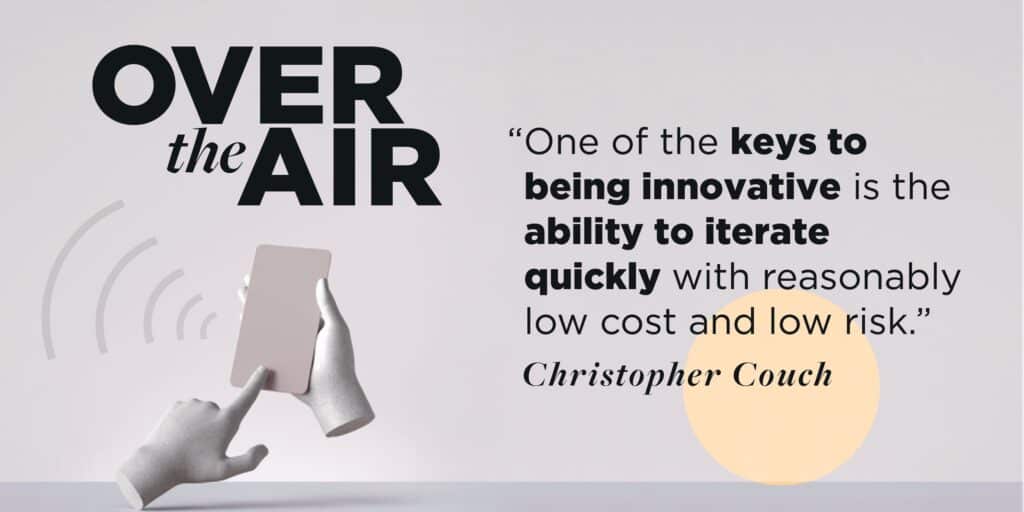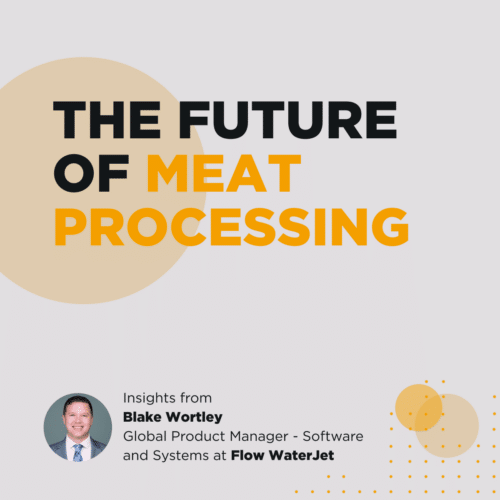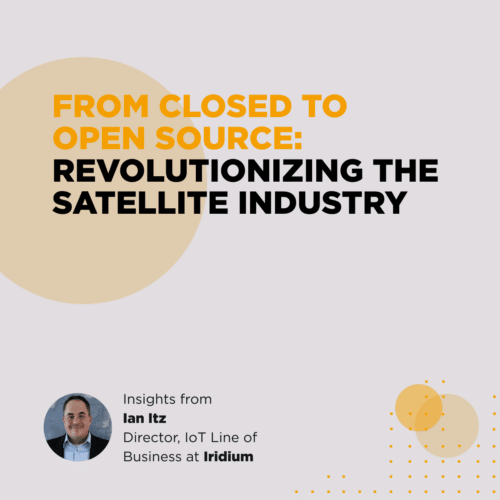Podcast
Episode 24: Intrapreneurship in Industry 4.0: What You Need to Succeed
January 31, 2022
24 minutes
Innovation is hard.
According to Christopher Couch, SVP, Chief Technology and Procurement Officer at Cooper Standard, and Founder and CEO at Liveline Technologies, one of the keys to success is finding a low-cost and low-risk way to break things and continuously experiment.
But once you hit on something innovative, something that solves a thorny problem, how do you know whether it’s something you should spin off into its own standalone company?
In a recent episode, we got into the weeds on intrapreneurship in industry 4.0.
We discuss:
- The events that led to spinning off a new company
- Managing the culture clash between the new and old
- Navigating the paradigm of being both vendor and competitor
- What you need to succeed
This post is based on a podcast episode with Christopher Couch, SVP, Chief Technology and Procurement Officer at Cooper Standard, and Founder and CEO at Liveline Technologies. To hear more interviews like this one, subscribe to Over the Air wherever you listen to podcasts.

The First Step in Intrapreneurship
Christopher began by solving his own company’s problem.
“What we were trying to do was real-time control with machine-learning-based controllers at a factory level,” he said.
At the time, his team had no idea they were going to end up where they are now. They were just looking at their company’s pain points in manufacturing plants around the world.
They thought they had an idea that might help bring new levels of automation, quality, and efficiency along with a lot of associated benefits — even energy savings and carbon footprint reduction.
“We were going about it a little bit in an unusual way for typical control gearheads like myself,” he said. “Once we got into it and came up with an approach that we thought was working, we said, ‘Look, this is pretty unusual, and maybe it’s useful elsewhere.”
Is This Useful Elsewhere?
At first, Christopher tried to do the smart thing and buy a solution to the problem. So he went hunting for the right solution.
Christopher found a lot of companies that were doing cool work, but nobody was really hitting this problem head-on.
No one had the solution. If Chris wanted it, he and his team would have to build it.
It didn’t take long to realize that nobody else could buy it either. That opened the door for a bigger conversation. Chris started calling companies in other manufacturing industries. Did they have pain points this solution would speak to?Some people call this kind of work entrepreneurship.
Intrapreneurship: Skills You Need to Be Successful
The most important question Christopher asks anyone he’s interviewing is: What do you do on the weekends?
What are their side projects? How will they demonstrate that they have the passion and perseverance to pick up new skills?
Intrapreneurship requires constantly acquiring new talents and abilities.
Can you rattle off five things that you know today but didn’t know 24 months ago? You should, and so should everybody on your team.
That way, you can look around and say, “Nobody here knows about streaming protocol X. Somebody go learn it next week.”
Then somebody goes in and doesn’t look up from their computer for 100 hours until they figure it out and can write it into code. That’s the mentality it takes when you’re trying to smash together technologies and come up with something useful.
4 Pillars of Successful Intrapreneurship
Intrapreneurship rests on four pillars:
- Find a pain point. Look for something without any adequate solutions in the marketplace.
- Assemble your team. Get people with the right mix of skills and eagerness to learn so you can take the project to the next level.
- Innovation requires experimentation. Create a playground. Give your team a place where they can break things and rebuild them on a daily basis.
- Explore other industries. Would your new solution be a value add in other contexts?
Challenges to Finishing the Last 5%
Getting to the 95% mark is about half the work. The last 5% is the other half of the work. That’s where you face your highest hurdles.
Christopher faced two main surprises. One was technical. The other was a business model surprise.
The technical surprise
The minimal tech stack required to pull off something this big is, unfortunately, a lot. Even at a minimum of scale, the technologies required are pretty imposing.
It would have been easier for Christopher and his team to come up with a minimum viable product than it was to pull off what they did.
But the raw, old school controls engineering knows how to talk to industrial equipment and design control loops and tune them to get good performance. So it worked.
The business model surprise
At the end of the day, it was very, very difficult to do an economic-gains-based business model. It took two and a half years in stealth mode to figure out the right approach. The problem was just hard to solve.
Staying Motivated in 2022
Christopher plans to keep grinding out the work. Here’s what keeps him motivated for the rest of 2022:
- Making a difference in manufacturing
- Helping people live better lives
- Creating a safer environment through more efficient manufacturing plants
- Make manufacturing cool by making it possible to interact with intelligent systems
Never miss an episode of Over The Air by subscribing wherever you listen to podcasts.

Hosted by: Ryan Prosser
CEO at Very
As Very's CEO, Ryan collaborates daily with product, sales, and marketing to deliver the IoT solutions our clients look for. He is also a champion for our culture, fostering transparency and efficiency across our distributed team.










